Illegal Netting of Shrimp Fry: A threat to marine biodiversity
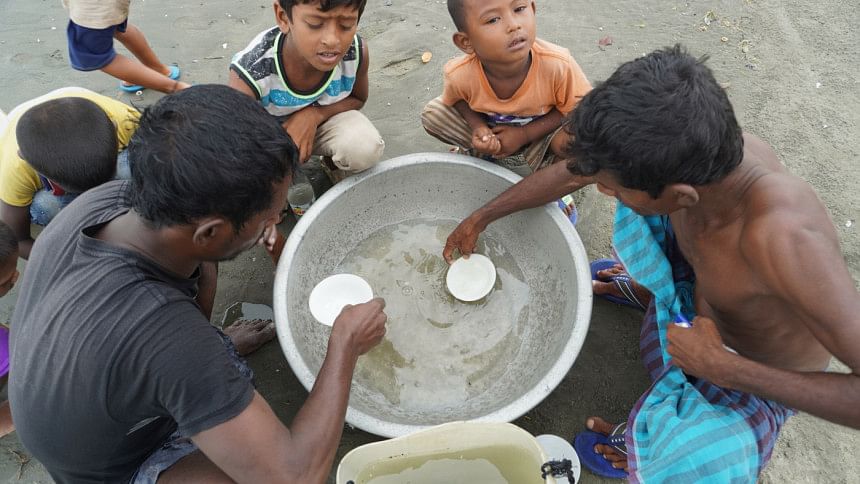
Defying the 65-day ban on bay fishing, a worrisome trend has emerged along the coastal districts spanning from Cox's Bazar's St Martin's Island to the Sundarbans in Khulna.
Local fishers have been targeting tiger shrimp fries, a delicacy known as "bagda chingri" in the region, using highly detrimental methods. Employing large zero-mesh nets with minimal permeability, they resort to two hazardous techniques: net-dragging and netted-closuring.
With the aid of these immense nets held at two opposite ends, the fishers drag them across the water from one side of the coastline to the other. This practice aims to capture the newly-hatched tiger prawns for their demand in local markets.
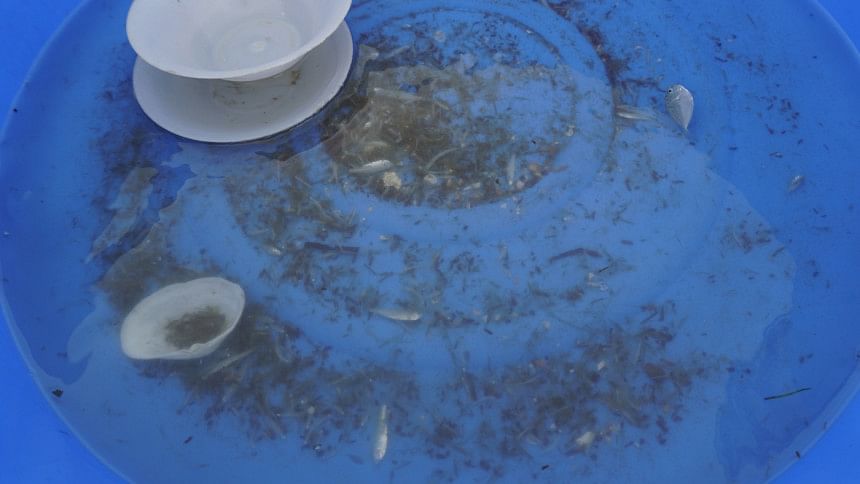
Moreover, they construct small enclosures to confine the fries and prevent their eggs from drifting away, leading to their untimely demise.
This alarming development has raised serious concerns among authorities and conservationists. The affected coastal districts, namely Laxmipur, Noakhali, Bhola, Patuakhali, Barguna, Bagerhat, and Satkhira, find themselves grappling with the repercussions of this blatant disregard for fishing regulations and ecological well-being.
A recent survey conducted by WorldFish's ECOFISH II revealed that for every tiger shrimp fry caught using the net-dragging and netted-closuring techniques, approximately 70-80 other fish fries are inadvertently getting killed.
During visits to the affected areas, this correspondent observed numerous locals engaging in such fishing practice along the coastline. These individuals use shells to identify and separate the tiger shrimp fries, discarding the remaining dead fries on the beaches.
Many marine fish species release their eggs near the coastline from May to July when the seawater sweetens after rainfall, explains Dr Shafiqur Rahman, principal scientific officer of the Bangladesh Fisheries Research Institute.
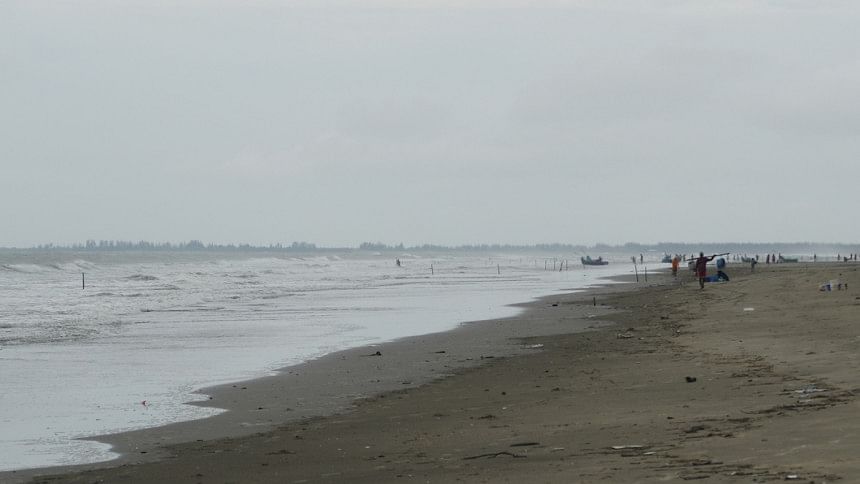
These eggs, including those laid in deep waters, float towards the bay and hatch into larvae, eventually growing into fry near the shoreline. Unfortunately, the practices of catching tiger shrimp fries result in the destruction of larvae, other shrimp varieties, marine fries, and zooplankton, causing significant damage to the area's aquatic biodiversity, he added.
Abdus Shukkur, owner of Sagar Dry Fish, said, "We struggle to find fish as most of the fries die after hatching during this period. One of the reasons behind this is the destruction of eggs, larvae, and fries while catching tiger shrimp fry on the coastline and estuary."
Mohammad Najibur Rahman, secretary of Shrimp Hatchery Association of Bangladesh, said they cannot produce the fries as they cannot catch the mother fish from the bay due to the ban.
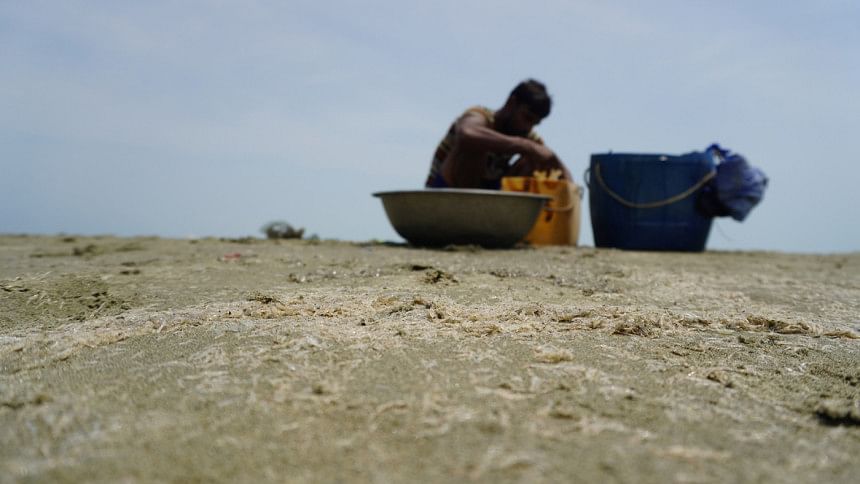
The country has 60 shrimp hatcheries with a combined production capacity of around 1,000 crores post-larva production against a market demand of around Tk 800 crore.
The market demand is high during this season as it is very suitable for shrimp cultivation.
"We have no savings to keep us going during the ban. We don't even receive government aid. This is the only option left for us," said Abdul Hamid, a fisherman from Cox's Bazar's Samitipara.
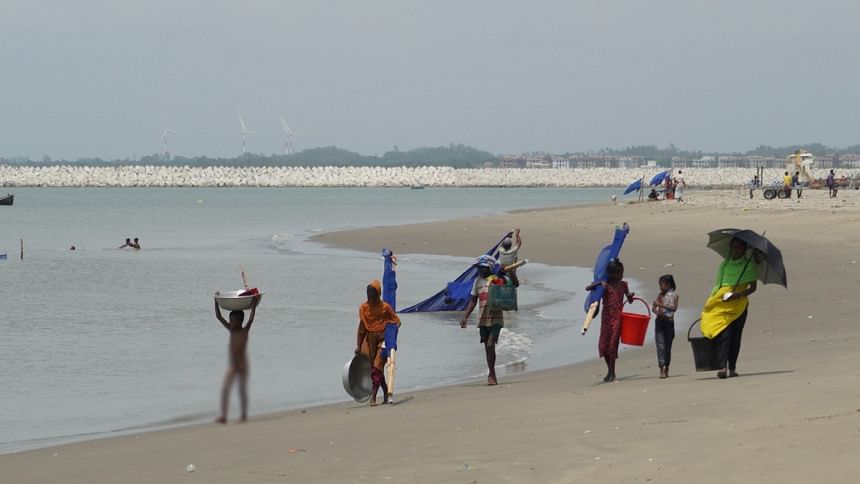
A hundred pieces of tiger shrimp fries are sold for Tk 40. Wholesalers buy it from local fishers and later sell it to shrimp farmers, said Jahangir of the same area, who catches around 500-1,000 fries every day.
"The fish grow easily during this season but we don't get any supply from the hatcheries during this period. Thus, we have to turn to the local fishers to source the fries," shared a fry-collector, preferring anonymity.
According to experts, lack of monitoring by the Department of Fisheries is to blame for this destruction. The government, in 2000, banned the collection of marine fries. However, the regulation only remains confined to paper.
"The field officers were asked to monitor the coasts and prevent such actions. The fries are mostly supplied to farms in Khulna as the demand is high there. Stern actions will be taken against the ban-offenders," said Syed Alamgir, principal scientific officer (planning and survey) of the fisheries department.

 For all latest news, follow The Daily Star's Google News channel.
For all latest news, follow The Daily Star's Google News channel. 



Comments